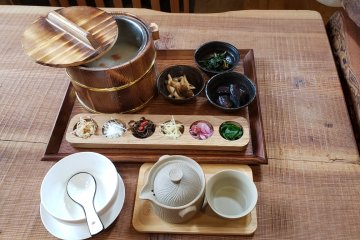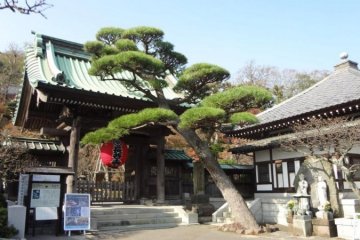
Bills Shichirigahama
Bills is run by Bill Granger, an internationally renowned Australian chef, who is particularly well known for his brunches.

Gokan boasts of serving some of the best Korean-style dining in the Shonan area. Try their dak gaelbi, bibimbap, or homemade kimchi for the delightful taste of Korea's best.

Bills is run by Bill Granger, an internationally renowned Australian chef, who is particularly well known for his brunches.

The Beef House GYUS specialises in all things beef. Based in the Shonan region, GYUS focuses on selecting the freshest and top-quality beef and horumon (innards), then cooking them with utmost care and dedication. Enjoy several varieties of top-class beef, including local Shonan wagyu, Miyazaki beef and Kagoshima black beef. Try from a range of styles, including hamburg steak, beef steak and yakiniku courses. GYUS also has full Halal certification.

Using animal-free products, brown rice, and locally sourced fresh vegetables, Ki to Toki creates masterful vegetarian meals that are not only delicious but a pleasure to look at. Try their set of 17 different dishes and fermented drinks with dessert and herbal tea or coffee after the meal.

Kamakura’s Hasedera Temple, a sister temple to Nara’s temple of the same name, is renowned for its 11-headed statue of Kannon, the goddess of mercy. This Jodo-sect Buddhist temple is one of the oldest temples in the city and has roots in the eighth century. Legend has it that the monk Tokudo Shonin requested two Kannon statues to be made from a camphor tree in 721. The smaller statue was enshrined at Nara’s temple, while the other one was thrown into the sea as an offering. In 736, the statue washed ashore in Kamakura, and Hasedera was built to enshrine it. Hasedera’s grounds feature a harmonious display of traditionally designed temple buildings interwoven with lush nature and seasonal flowers, making for a peaceful stroll. Thanks to its elevated position, it also offers wonderful views of Kamakura’s townscape and Sagami Bay. The temple’s artfully crafted nature is on full display when you first enter the grounds. The welcoming garden features a pond encircled by plants, the small Benten-do Hall, dedicated to the goddess of music and wisdom, and Benten-kutsu Cave, which contains carved statues of deistic Buddhist figures. If you are hungry, refuel at the temple’s Teraya Cafe, located just before the entrance, or Kaikoan, which is built at an elevated level and boasts large windows with fantastic views of the area. Admission to the temple costs 400 yen for adults and 200 yen for children (ages 6 to 11). Parking costs 350 yen for 30 minutes.

Kotoku-in es el nombre más común para “Taiizan Kotoku-in Shojosen-ji” en Kamakura, prefectura de Kanagawa. Este templo budista Jodo-shu es conocido por su Diabutsu, o gran Buda, que es uno de los íconos más famosos de Japón. La estatua, comúnmente conocida como Kamakura Daibutsu (Gran Buda de Kamakura), es una colosal imagen de cobre del Buda Amitabha. El Buda, que fue declarado tesoro nacional por el gobierno japonés, mide unos 11,3 metros de altura y pesa unas 121 toneladas. El Kotoku-in pertenece a la secta Jodo, una secta budista tradicional fundada por el sacerdote Honen (1133-1212), seguidor de Amitabha. Según el sistema de creencias de la secta Jodo, todas las personas son iguales y uno solo tiene que cantar el "Nenbutsu" para recibir la protección de Amitabha y renacer en la "tierra pura".

El Daibutsu de Kamakura es una hermosa estatua de bronce del Buda Amitabha que se erigió en el Templo Kotoku-in a mediados del siglo XIII (hace 750 años). Con una altura de 11,3 metros, es la segunda estatua de bronce de Buda más alta de Japón que solo es superado por la estatua en el templo Todaiji de Nara. El Buda ha meditado al aire libre durante unos 500 años después de que el salón del templo en el que se encontraba originalmente fuera destruido varias veces por tsunamis y tifones. Cuando lo visite, es posible que lo vea empapado en la lluvia, bajo el abrasador sol, o simplemente disfrutando del cálido sol primaveral. El daibutsu de Kamakura se ha mantenido intacto sin grandes restauraciones desde que fue construido.